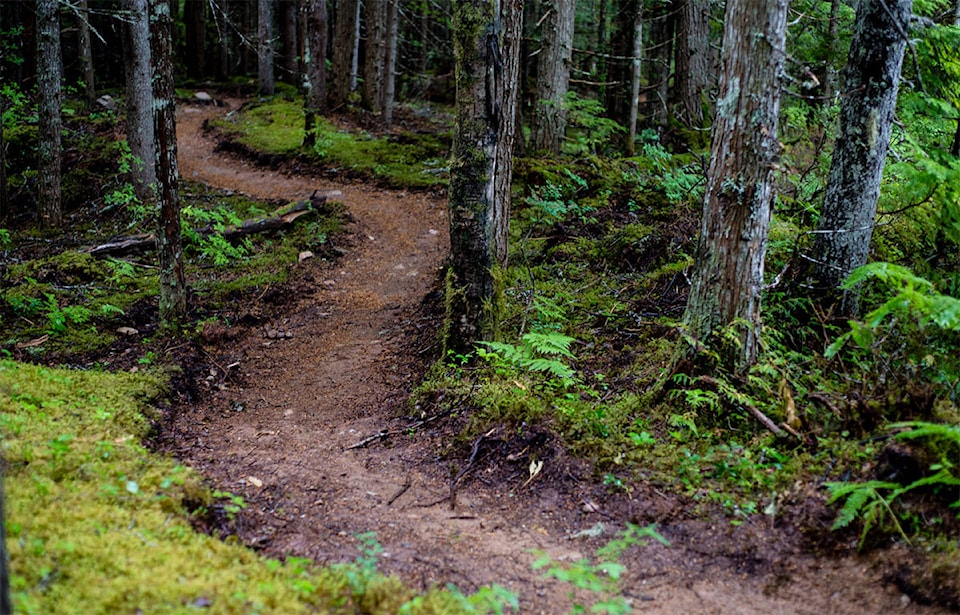If you’re a mountain biker, hiker, trail wanderer or forest-bather, one of the best sights of the season is gleaming gold dirt peeking out at trailheads just as the spring thaw starts to take hold. With warm spring weather arriving, we’re all looking to nature to soak up those Waldeinsamkeit vibes. But before you rush out the door and hit the trails, there are a few things to think about.
The trails at this time of year are a smorgasbord of snow, ice, frozen dirt, thawing dirt, dry dirt and mud. A. Lot. Of. Mud. If you’re starting your activity and the trail bed had mud deep enough you’ll have to leave Marian’s trench behind you as you ride through it, the best thing to do is turn around. But, why? We’re seasoned outdoorsy people, and a little mud never hurt anyone … except for the trail.
A few things happen when we encounter a lot of mud and water on the trail. When we walk or ride through the mud, we displace dirt. That displaced dirt often ends up clogging drain paths causing water to either collect on the trail or to run down the trail like a waterfall, resulting in erosion. If water collects on the trail and multiple people travel through it, the mud hole gets deeper and deeper, damaging the trail surface.
OK, so you’ve started your hike/bike/forest bath, and the trail looks dry, so you continue. If you encounter a random puddle, should you go around it? Of course not, because we’re seasoned outdoorsy people and a little mud never hurt anyone, right? Seriously, though. This is actually important; the best thing to do is to travel directly through the puddle to avoid causing damage to the areas around the trail. From a maintenance perspective, it’s easier to fill a hole than to regrow moss and other vegetation. However, if the puddle in front of you looks like it could swallow a Volkswagen then, by all means, find a safe way around it.
| Aleksa Havelaar |
Something we can’t emphasize enough is that even though these trails are close to town, the same rules apply here as backcountry travel: pack in what you pack out, including your banana and orange peels. “Leave no trace” is a good practice whether you’re hiking in Yoho or riding Steinhoe.
Finally, you might not know it, but volunteers (also known as trail fairies) maintain the vast majority of trails around the Terrace area. Every season, more than 1,000 volunteer hours are spent removing debris, fixing up drainage problems and dealing with any other issues that may have arisen from a season of use or bad weather. We can’t control the weather, but we can control how and when we use the trails. If we all do our part to take good care of these resources, we’ll have the privilege of enjoying them for years to come.
For up to date information on trail statuses, you can always check Trailforks (Search for Terrace). Popular trail conditions are updated weekly.
If you’re curious about how to get involved in trail maintenance or advocacy, send an email to info.torca@mail.com.
Aleksa Havelaar is an avid mountain biker and a strong advocate for access and sustainability as the Director of Trails for the Terrace Off-Road Cycling Association (TORCA). When she’s not on her bike, she can be found wandering around the forest usually with a rake or a shovel in hand.
